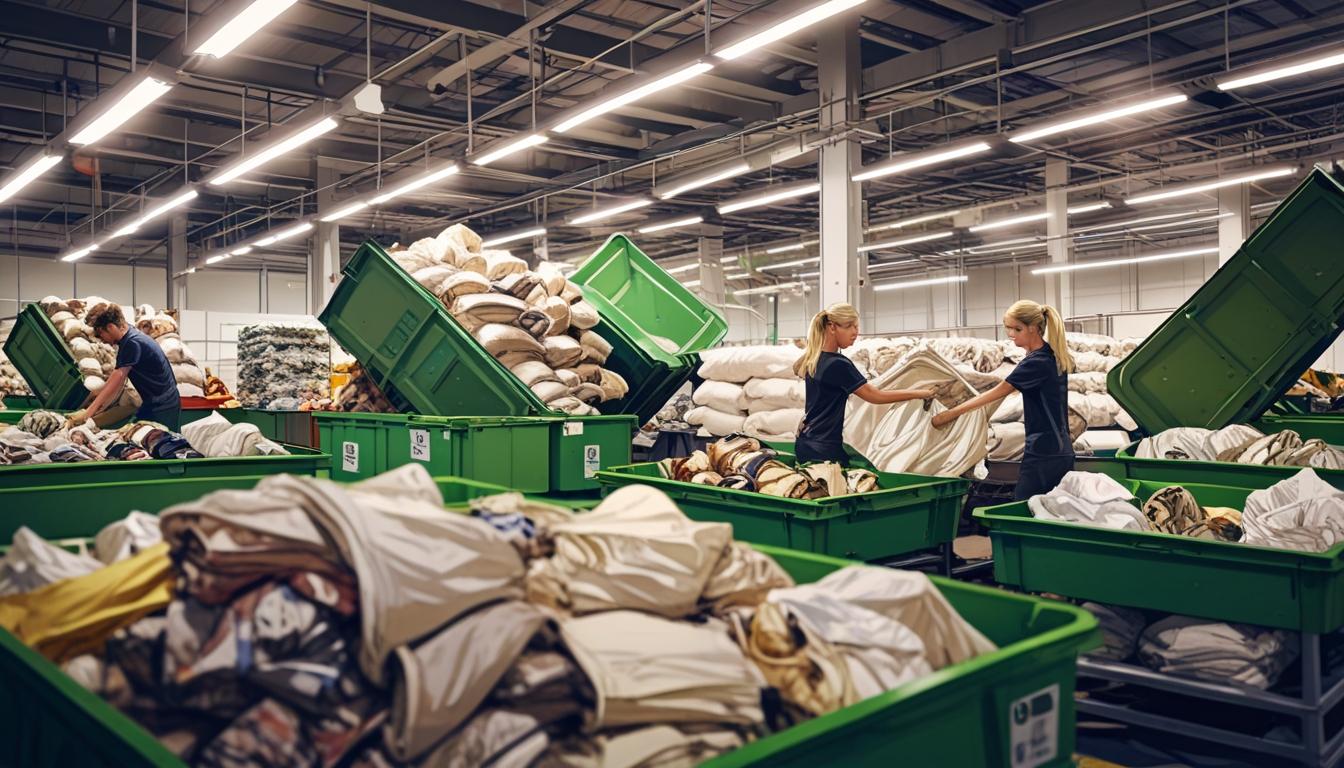Human Bridge faces a surge in textile waste as Sweden implements new recycling laws, highlighting both challenges and advancements in waste management.
In Rosersberg, Sweden, a significant increase in textile waste has been observed as the organization Human Bridge processes an influx of discarded garments and materials. This growth comes on the heels of a recently imposed textile waste law aimed at enhancing recycling measures throughout the country. The challenges and successes associated with this change draw attention to the current state of textile waste management in Sweden.
Human Bridge, the largest textile collector in Sweden, is currently facing unforeseen volumes of waste. Lars Råsberg, the deputy director, expressed his surprise at the surge, stating, “No one could have imagined it would increase this much. We are caught off guard when it comes to both equipment and transportation,” in a conversation with Dagens Nyheter. He continues, recognizing some of the positive implications of the law, noting, “Fundamentally, I think it’s great. It means that people are adhering to the rules and feel that this is something worth preserving.”
The recent weeks have seen Human Bridge’s operations ramp up significantly. In the Stockholm and Uppsala regions, Göran Nyström, the regional manager, reported an increase of 50 to 60 percent in volume this January compared to the previous year, alongside a 40 percent rise in February. To accommodate this rapid growth, further investments are underway, including the construction of an advanced sorting line, aimed at refining the process and enhancing capacity. This new equipment will potentially allow the organization to sort between 15,000 and 20,000 tons of textiles annually.
As they adjust to the increased pressure, the team at Human Bridge contends with the reality that not every piece of textile can be successfully reused. Nyström highlighted the importance of educating the public about what qualifies as reusable material. “Fabric that is heavily soiled, oily, bloody – it’s contaminated,” he noted, explaining that many items currently submitted, including broken shoes and small fabric pieces, cannot be processed due to contamination.
Despite the organization’s primary focus on reuse rather than recycling, it faces substantial hurdles in the textile waste recycling process. Currently, less than one percent of the world’s textile waste can be recycled from fiber to fiber. According to the Swedish Environmental Protection Agency, about 20 percent of Sweden’s textile waste sent abroad is repurposed as raw materials for new products.
At their Rosersberg facility, textiles are sorted into bales, with each weighing approximately 250 kilograms. These bales are then stored until they can be shipped to various locations across Europe for further processing. It is crucial for Human Bridge that the textiles collected are in sufficient condition for reuse; otherwise, excess waste must be managed more carefully if the challenges of recycling are to be mitigated. Nyström pointed out, “If the mountains of clothes at recycling centers are to decrease, even more is needed… It’s about getting information out, but above all about changing behavior.”
Human Bridge actively collaborates with 170 municipalities to facilitate textile collection, underscoring their ongoing commitment to managing textile waste in Sweden. The organization, which primarily focuses on providing medical supplies to under-resourced countries, funds its efforts by selling sorted textiles to sorting companies across the EU. The end products from these efforts primarily find their way to secondhand stores in Europe and Africa, with a minimal percentage ultimately designated for incineration.
As Human Bridge continues to navigate these burgeoning challenges and opportunities, the evolution of Sweden’s textile waste law remains a focal point of their operations. The outcomes will likely influence future practices in textile consumption and recycling across the nation.
Source: Noah Wire Services




